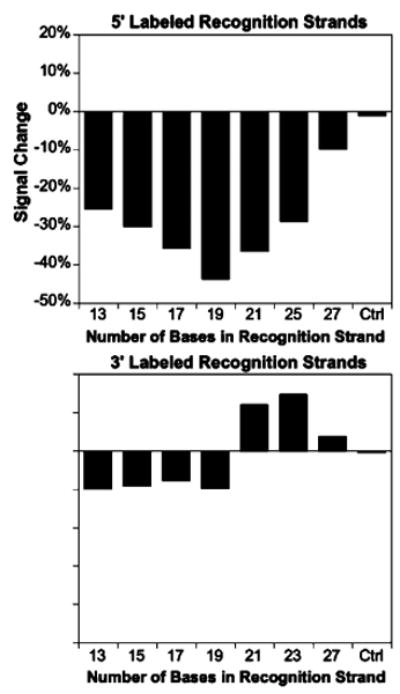Figure 2.

Sensor response depends on the flexibility of the DNA scaffold. Using a 27 base anchoring strand and 5′ placement of the biotin recognition element (distal to the electrode), we achieve optimal signaling with a recognition strand of 19 bases (centered on the middle of the anchoring strand). In contrast, 3′ placement of the recognition element produces a sharp transition from signal-off behavior at short lengths to signal-on behavior for recognition strands of 21 or more bases. Double-stranded scaffolds 17 bases in length lacking the small molecule recognition element (Ctrl) do not respond to target. All data represent addition of saturating (50 nM) streptavidin target.
